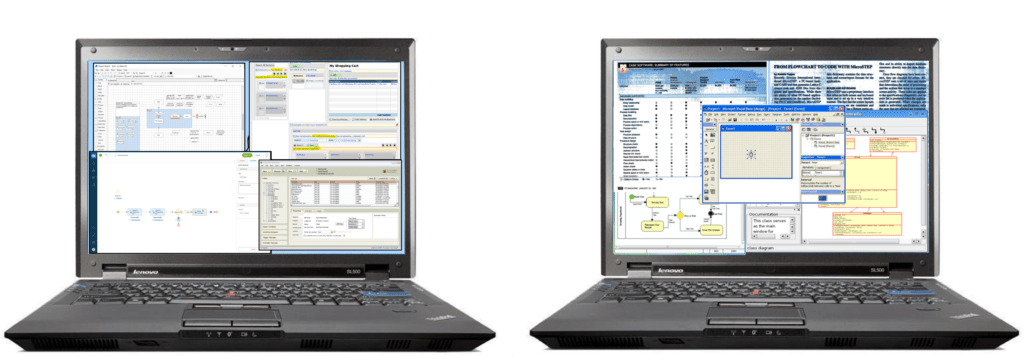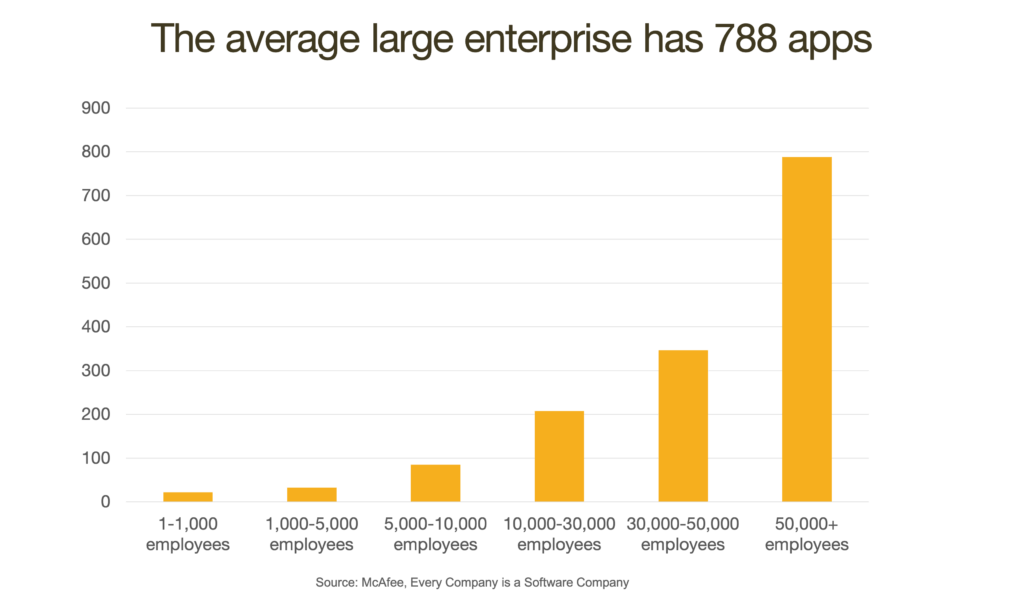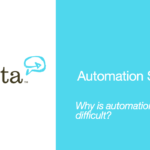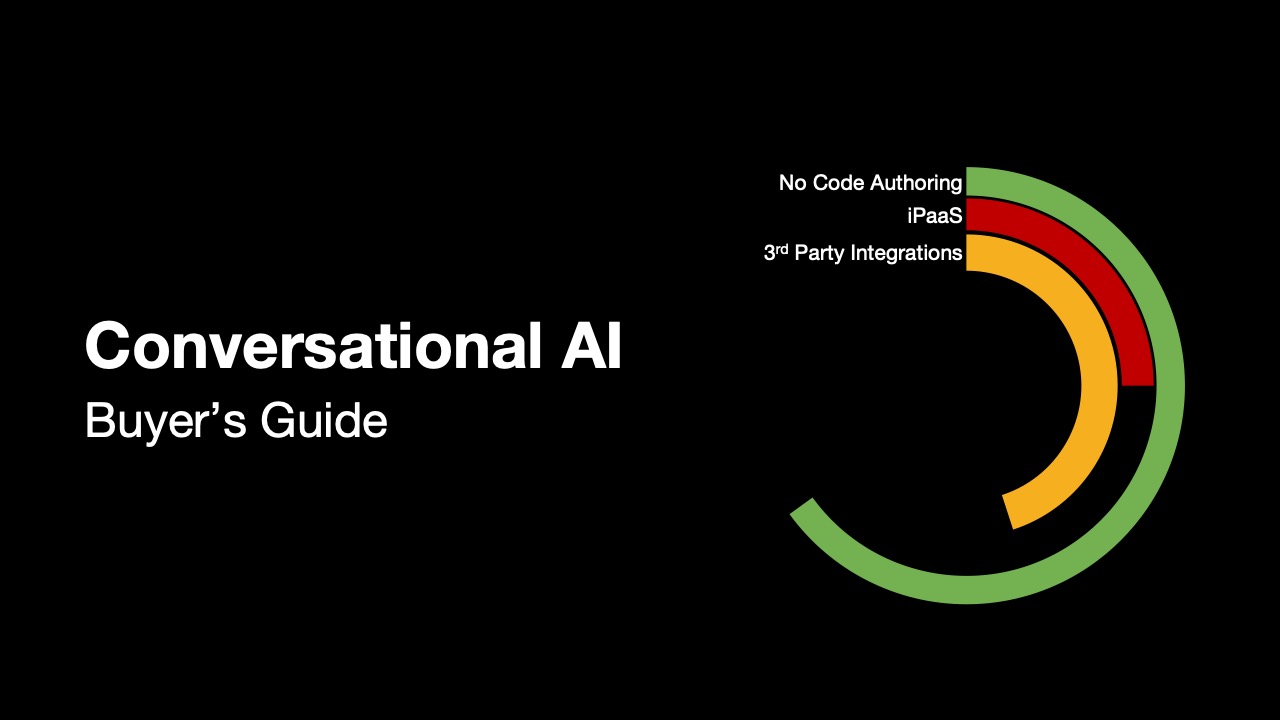Your Current Automation Approach Is Unsustainable; Here’s How to Fix It.
If you don’t see it, then maybe you aren’t there yet. Perhaps you are just starting and don’t have requests from business users to create automations across more than one system. Or maybe you see it getting out of hand and are exploring ways to keep automation from becoming an even bigger burden.
Regardless of the reason, if you are searching for a path out of your current situation, you are not alone. And it is not entirely your fault. In your efforts to make things easier for business users, you, in turn, have made it harder on yourself.
Solutions that promised to make things easier are actually the root causes of why it is so hard. These solutions are very good at automating certain tasks but fall short when the business realizes it needs more comprehensive automation. I’ll explain why this happened to help you reevaluate your approach.
Building Complexity into the Business Environment
Two forces — inefficiency and demand for new functionality — work against IT in delivering service to the enterprise causing us to do unsustainable and unrealistic things.
IT maintains systems of record, such as ERP, CRM, SCM, and HR, to process core business transactions. Admittedly, we need all these backend systems to process the transactions, and IT delivers this very well. However, the business doesn’t just need core systems; it also requires data and processes that cross siloed systems and people.
The reason: Some of the questions the business typically asks aren’t serviced by one system. Answers demand collaboration between the systems themselves and the various people responsible for different facets of the company.
We give the business the systems of record — which may or may not be a good idea — and then build custom apps to fill gaps in workflows to accomplish tasks between the boxes in the backend systems. Large enterprises have hundreds of task-oriented custom apps to fill these gaps. We end up with massive complexity.
If that’s not bad enough, there is also an insatiable continuing demand for new automation in various capacities, which sparks a relentless need to build even more apps.
But those aren’t the only complexity problems we must contend with.
Not Providing the Business a Self-authoring Program
The tech we are using today in process automation — RPAs, LCAPs — claims features like point-and-click data modeling, a visual screen designer, and flowchart to code.
However, the incredible irony is that those are precisely the same bullets I pulled from a PC Magazine article in January 1990 describing CASE tools of the day. In other words, the stuff we’re calling modern process automation technology maps practically 100 percent with the same technology that we delivered 30 years ago!

Look at the above image. Other than the screen resolution, you can’t tell the difference between the screens on the left (today’s tech) and those on the right (90s tech).
The operating systems and UI patterns have changed — they generate web apps instead of character mode or GUI apps — but the reality is the UI record-and-replay approach, the central force for RPA integration, is the same tech that has not been very successful in UI automated testing for three decades. I know this space. I founded a company that built a protocol-based testing platform that a larger software company eventually acquired to combat this very problem.
How about the low code application tech we use? Every few years, we come out with another round, deploy it for a while, and then abandon it, or worse, maintain the specialized code at high costs. We go a few years without it and then come up with another round.
Not Moving Toward Business Self-service but Full SDLC
Classic software development challenges are rampant throughout the RPA and LCAP space. Bots run faster in one environment than another and eventually break, making for a difficult software development challenge. Plus, they need a dev environment, test environment, integration, test data management, etc., and end up with an entire SDLC.
Robotic Process Automation’s promise was it is all just AI — we describe what we want and the software figures it out — when in fact, it’s no different from traditional software development.
Creating automation at the UI results in an explosion of labor costs. A healthy market would be productizing more, and services would be coming down. Instead, services dollars are going up as a percentage of total spending in RPA. Big system integrators are seeing 100, 200, or even 300 percent growth year-over-year.

We have to find an approach that is service efficient so thinkers can do a ton of the work, not spend more time and money banging out and fixing code.
Automation Projects Force Their Own SDLC Process
The two forces mentioned earlier in this prevailing approach represent poor enterprise architecture, which is largely why they get abandoned. The consequences are not insignificant, nor are they years down the road issues — they are right now issues.
It’s great demoware, just like the old UI recording replay in the automated testing space. You would use the app, record a script, rerun the script, and there’s your automated test.
Everyone thought, “We’re going to be through recording tests in a week.” How is it, then, that we never finished? We demoed in two days, but it took weeks to deploy the real thing. We failed to realize that recording, evaluating the generated test script, refactoring, manipulating data and logic took weeks longer than expected.
And every time we revalidated the existing system after a new build, it always broke. We were spending more time maintaining tests than we were getting test automation, which is why most of those projects eventually crumbled.
UI Integration Challenges Business Agility
All the demoware and apparent quick wins that script UI level integration provides us also present significant challenges where business agility is concerned.
These examples illustrate my point. Imagine a multinational corporation with a common customer relationship management application:
- EMEA’s scripts break when the U.S. makes a system upgrade. Because EMEA can’t be down for weeks sorting all this out, the U.S. must rollback.
- IT can’t upgrade the call center CRM because agents “know the old one” and can’t set aside time off the floor to retrain.
- New business rules cause UI changes, resulting in a “Whac-A-Mole” of bots that hang all over the place.
I think you understand the point. The automation becomes a constraint to innovation since it is hard-wired to the UI and brittle.
People Serving Software, Not Software Serving People
People, Process, and Technology’s goal has always been to share equal weight among the three as we build out an automation strategy. The problem, however, is that process and technology are indistinguishable. Worse, technology has overpowered the discussion without adequately focusing on people and processes. Take voice, for example. Companies are dictating how people use systems because tech enables them. We see companies forcing voice-enabled digital assistants (Siri, Google Assistant, Cortana, Alexa) because they like the tech. However, these projects failed since the process centered on the tech, not the people. It’s hard to understand Alexa reading a graph to you vs. Conversational AI that displays a real-time graph.
In our view, people are an afterthought. We pit the business’s employees against numerous processes and make them conform to technology instead of thinking about all the process areas to focus on the people.
People Can’t Handle the Complexity
Similar to the famous line from the movie A Few Good Men — “You can’t handle the truth” — people are unable to handle the complexity of the solutions we offer.

For example, the average large enterprise has 788 custom apps. The average corporate desktop has 50+ apps (which users switch 1,100 times per day). All of these apps require weeks of software training, so users understand how to perform their jobs. Then, the LCAP industry expects to produce 500 million more apps in five years! Expect more user resistance.
What happens when we encounter user resistance? We call them stupid or lazy. But isn’t it human nature to put off and resist doing things outside our comfort zone or routine?
More apps are not the answer; making technology that serves people is.
The Sustainable Approach to Intelligent Automation
I promised you a solution to the unsustainability problem: We must make people the center of the process automation strategy.
The answer lies in process modeling, not represented as technology but as conversations among people and systems.
People-Centric Automation Architecture
Our mission is not to make people understand tech but create tech that understands people. That ethos permeates everything we do.
We have found that the key to changing the approach to intelligent automation is to develop a zero-friction, zero-training environment using technology people already understand: chatbots, email, SMS, and business communication platforms like Slack, Skype, and others.
With that in mind, our goal is to converge the best capabilities of these four loosely-coupled tech stacks — RPA, LCAP, Conversational AI, Cloud Data — into a single solution and make them conform to people, not the other way around.
Krista clearly distinguishes between the process layer, people layer, and tech layer. We make automation a conversation with people and systems. We personify backend systems so that they become like a “person” on your team.
How can your business speed up with such a system?
- Create automation as fast as you can write requirements using an intuitive conversational authoring tool.
- Start quickly by utilizing an extensive pre-built automation catalog.
- Redeploy IT resources for innovation since delivery times, maintenance, and training needs will significantly decrease.
- Retire countless custom apps and their backlog to reduce your IT support costs.
- Realize increased productivity by simplifying the corporate desktop and making processes more human-centric.
Make process automation conversational, letting your employees use the communication tools they are comfortable with, and you get the only managed, self-service platform built for the enterprise that puts people before technology.
If you have questions, would like a live demo or trial account, contact us. We would love to show you all the advantages Krista’s Conversational AI can provide your organization.





